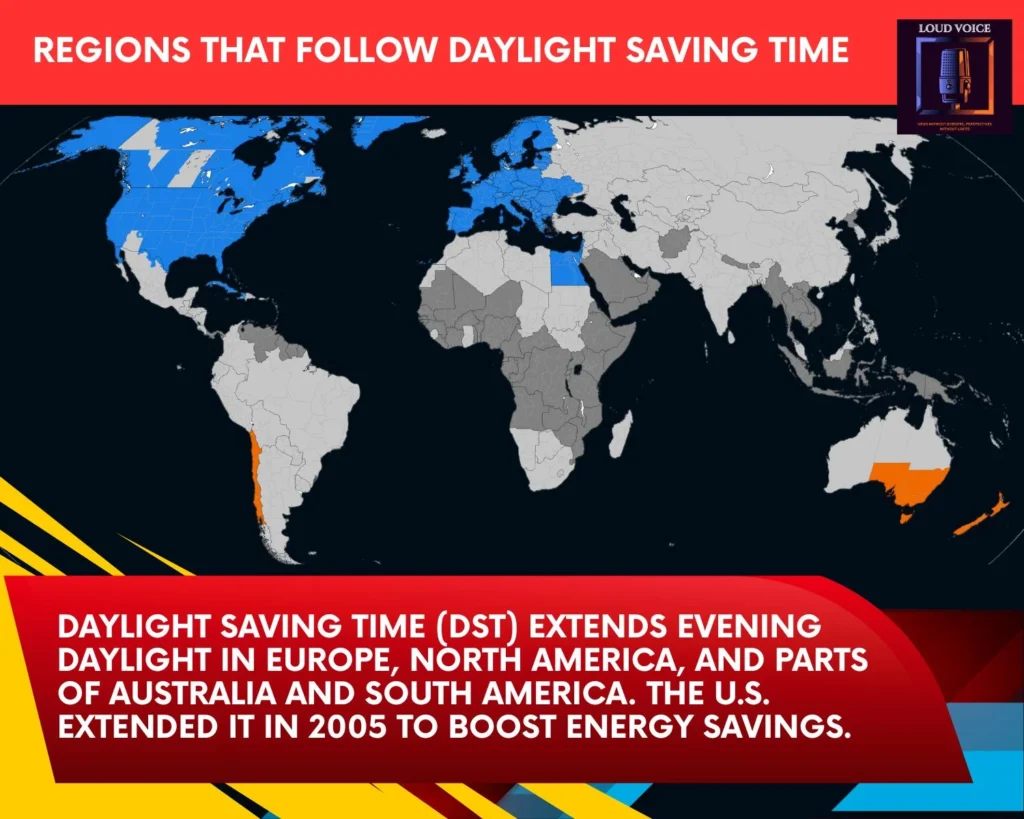Understanding Daylight Saving Time: Does It Save Energy?
On Sunday, March 30, 2025, many regions worldwide will move their clocks forward by one hour for daylight saving time. Initially introduced to maximize natural daylight and reduce artificial lighting, DST was first implemented by ancient societies and later formalized during the Industrial and Agricultural Revolutions. The idea was to extend daylight hours for economic efficiency, particularly in agriculture and manufacturing.
However, as energy consumption patterns have evolved, its actual impact on energy use and climate change remains a subject of debate. While some believe that shifting the clocks reduces overall electricity demand, others argue that it increases energy consumption in other areas, such as heating and cooling.
Global Adoption of DST: Who Observes It?
DST is not universally observed, with different countries and regions making independent decisions based on geographical and economic factors.
Regions That Follow DST:
- Most of Europe observes DST under British Summer Time (BST) and Central European Summer Time (CEST). The practice aims to extend daylight hours into the evening, which is particularly beneficial for businesses and tourism.
- Parts of North America, including the United States and Canada (except for Arizona and Hawaii), observe DST. The U.S. Energy Policy Act of 2005 extended it by several weeks to supposedly enhance energy savings.
- Certain regions in Australia and South America also adjust their clocks seasonally, depending on their latitude and climate conditions.

Regions That Do Not Observe DST:
- Most of Asia, including major economies like China, India, and Japan, has rejected DST due to minimal benefits relative to their natural daylight distribution.
- Most of Africa does not use it, as its equatorial location means daylight hours remain fairly consistent year-round.
- Parts of South America and the Middle East have abandoned DST, often citing concerns over disruptions to daily life and business operations.
The Climate Impact of DST: Weighing the Pros and Cons
Potential Benefits of DST
Supporters argue that DST can help reduce electricity consumption in several ways:
- Lower demand for artificial lighting: With extended daylight hours in the evening, people rely less on artificial lighting, leading to lower electricity bills.
- Reduction in peak energy consumption: Aligning work and social activities with daylight hours can help reduce strain on power grids.
- Encouragement of outdoor activities: It promotes outdoor recreation, which can reduce indoor energy use from televisions, computers, and other appliances.
- Economic advantages: Retail businesses, restaurants, and tourism-related industries often benefit from extended daylight hours, leading to increased economic activity.

Drawbacks of DST
Critics highlight potential negative effects, including:
- Increased heating demand: Darker mornings, particularly in colder months, lead to increased energy use for home and office heating.
- Higher air conditioning use: Longer daylight hours can contribute to greater cooling demand, particularly in hotter regions.
- Minimal overall energy savings: Some studies suggest that the net energy savings from DST are negligible, as any reduction in lighting is offset by increased HVAC (heating, ventilation, and air conditioning) consumption.
- Health and productivity concerns: The time shift disrupts sleep cycles, potentially reducing productivity and increasing health risks such as heart attacks and workplace accidents.
Experts Divided on DST’s Impact on Emissions
Arguments for DST’s Climate Benefits
The advocates of environment claim that it can support the transition to a low-carbon economy, especially in the push for net-zero emissions by 2050.
- A study published in Environmental Research Letters found that it could reduce cooling energy demand in office buildings by aligning business hours with natural daylight.
- Countries with high solar energy reliance might benefit, as peak demand aligns better with solar power generation, improving energy efficiency.
- If combined with broader energy efficiency measures, it could contribute to lower fossil fuel consumption.
Counterarguments Against DST’s Effectiveness
Sven Eggimann, a sustainability researcher at EMPA, argues that its historical focus on lighting savings is outdated. He points out that:
- Modern households use energy-intensive appliances: Unlike in the past, today’s homes rely on heating, cooling, and electronic devices that are unaffected by daylight shifts.
- Heating and cooling demands outweigh lighting savings: The real energy consumption problem lies in temperature regulation, not artificial lighting.
- DST’s benefits are region-dependent: In some areas, the extended daylight hours may be irrelevant due to climate conditions and lifestyle habits.
The Global Debate: EU and US Perspectives
The EU’s Ongoing Discussion
The European Union has been debating whether to abolish it altogether. In 2019, the European Parliament voted to end mandatory clock changes, allowing member states to choose permanent summer or winter time. However, as of 2025, implementation has been delayed.
- Germany and France support permanent summertime to boost economic activity and outdoor lifestyles.
- Other nations favor standard time due to concerns over health risks, sleep disruption, and energy inefficiency.
The US Perspective
The United States has also questioned whether DST remains beneficial:

- President Donald Trump labeled it as “inconvenient and costly”, advocating for its elimination.
- Some states, including Florida and California, have proposed making it permanent, but federal legislation is required to implement any nationwide change.
- Studies have produced mixed results on whether it offers net energy savings, leading to ongoing debates at the state and federal levels.
Is Daylight Saving Time Still Worth It?
As British Summer Time (BST) approaches, the global debate over DST’s effectiveness continues.
- Supporters argue that it optimizes daylight use, reduces emissions, and aligns energy demand with solar power generation.
- Opponents believe that its benefits are negligible or offset by increased heating and cooling demands, questioning its relevance in a modern energy landscape.
With ongoing discussions across Europe, North America, and beyond, policymakers in the UK and other nations must reconsider whether it remains a viable tool for tackling climate change and energy consumption.
As the seasons change, so does the debate over our clocks—a discussion that seems destined to resurface time and again.


